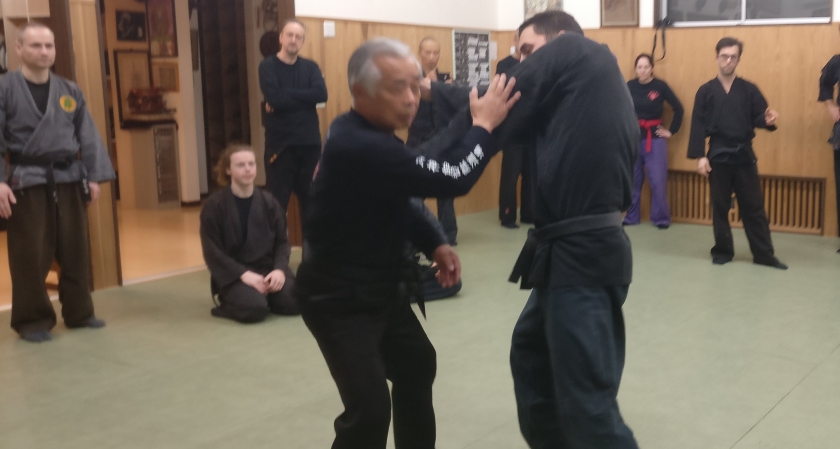
A class with Noguchi sensei is always a surprise. Last class, we covered the Shizen Chigoku Gata (the first level). As often with him, I am lost after ten minutes!
Noguchi sensei has this fantastic ability to make something new with old techniques. And for many of the techniques, his renewed interpretation is impressive.
Over the last thirty years, we have covered these techniques many times. But each time, he gives a new interpretation. I am amazed by his ability to do that, as it shows the technical distance he has with me. For example, his “new” Fū Batsu was nothing like I saw before, his Ryōte Gake Noguchi Ryū was even stranger.
Seeing that, I often paused during training, trying to decipher the pattern of the real Waza. That brought a few thoughts that I want to share with you.
Before going ANY Waza, he reads them from the Denshō. He doesn’t work from memory but interprets the technique as if it was the first time.
He follows a teaching pattern in five steps, like the five elements. The first variation is always a “Chi” like movement, the last one a “Kū” like movement. I mean that for the last change he is hardly touching the opponent.
Whatever the original movement, he continues it against fist attack. Then he changes whatever can be, still keeping the Kaname (key point) alive.
I also discovered yesterday that my understanding of Japanese names is limited. In the West a word is a thing, here it is an image. For example, Noguchi sensei was blocking Uke’s arm from the outside on the upper arm. He used the word “Jakkin” to define the point he was hitting. Until then, I thought that Jakkin was only on the inside of the arm.
Later he hooked Uke’s foot from the inside with his leg, like in Uchi Gake. He called it “Ashi Dome.” Until then, I thought of Ashi Dome as a set technique from the Chi Ryaku no Maki. It is not what I thought it was.
In the new edition of the Tenchijin (1), Hatsumi Sensei writes about Ganseki Nage. He lists the “official variations”: Ganseki Otoshi, and Ganseki Oshi. But there is a third one: Ganseki Ori (2), and we did it. It was a kind of Ganseki turning into a robust Ō Gyaku (you end up facing Uke).
After the Shizen Chigoku Gata, we did some Hanbō Jutsu. Noguchi Sensei reminded us that neither the Hanbō nor the Jō, belong to any one of the Ryūha. We do the techniques with the “feeling of the Kukishin Ryū,” but they are not Waza from the Kukishin. As a joke, he added, “tonight we do Noguchi Ryū Hanbō Jutsu.”
The class lasted only ninety minutes, and still, I learned more than I could ever imagine. The points above might look like details. But once incorporated into your Taijutsu, they will change it profoundly. That is why we have to come and train here often. If you already have been practising in Japan, it is good. But if you can afford to travel every year, I can assure you that you will get a much better Taijutsu.
See you here on the mats soon!
_________________________
- http://shinden-ediciones.com/es/14-bujinkan-ninjutsu
- 折る, Ori(oru): o break; to fracture; to break off; to snap off; to fold; to bend
